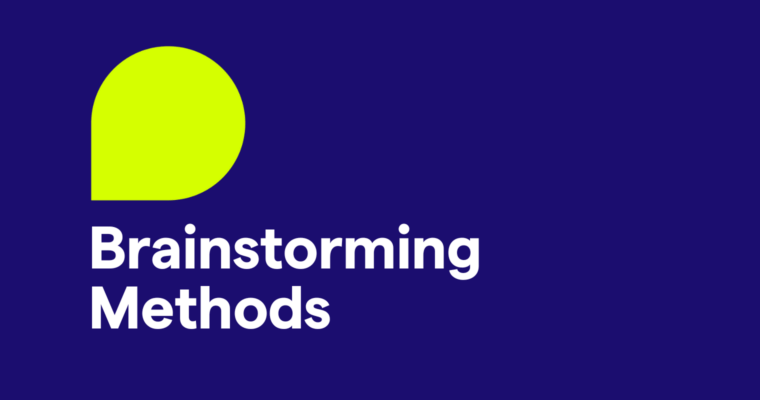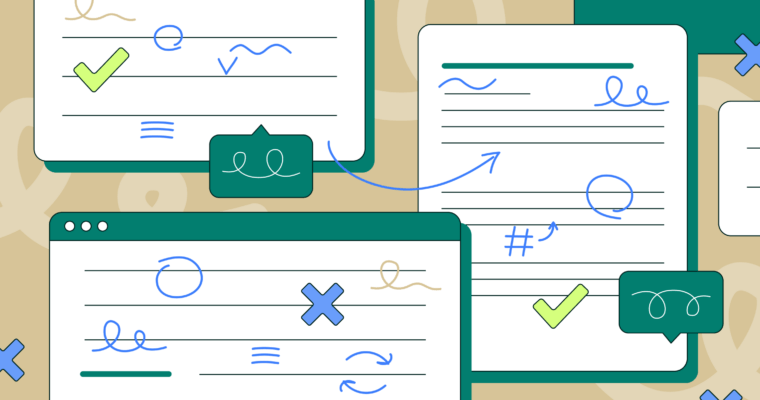
A structured brainstorming process turns scattered ideas into clear, compelling writing. Whether you’re drafting an article, essay, or business proposal, brainstorming isn’t just about generating ideas—it’s about organizing them effectively to create a strong foundation.
This guide walks you through five simple steps to refine and structure your thoughts, helping you brainstorm with purpose. By following this process, you’ll develop a more systematic approach to idea generation and ensure that your writing is both creative and well organized from the start.
Table of contents
Preparing for a successful brainstorming session
How to brainstorm in five steps
Step 1: Define your writing goal or problem
Step 2: Choose a brainstorming method
Step 3: Generate ideas without filtering them
Step 4: Group and refine your ideas
Step 5: Create an outline or a plan
Avoid common brainstorming pitfalls
Enhance your brainstorming with AI
Preparing for a successful brainstorming session
Before you begin brainstorming, set yourself up for success with a few essential preparations:
- Create a productive environment—Find a space that’s free of distractions. Consider a “no internet” rule to help you stay in the zone. Gather the tools you need, whether it’s a notebook, whiteboard, computer, or digital tools.
- Timebox your session—Set a time limit to keep your focus sharp. You may find it most productive to work in short bursts, like 10–20 minutes, to prevent overthinking.
- Stay open-minded—Be open to unexpected ideas and allow thoughts to flow naturally. Brainstorming isn’t about getting everything right immediately—it’s about exploring possibilities.
How to brainstorm in five steps
Brainstorming isn’t about listing random ideas—it’s about developing clear, actionable concepts that strengthen your writing. The five steps below will help you generate ideas, structure them effectively, and create a solid plan before you start drafting.
Step 1: Define your writing goal or problem
Start with a clear question or statement to guide your brainstorming. A well-defined goal keeps your ideas on track and purposeful.
Examples:
- Too broad: “Write about brainstorming”
- More specific: “How can I teach writers to brainstorm effectively?”
If you’re unsure where to start, try:
- Using writing prompts related to your topic
- Asking “what if?” questions to explore possibilities
- Listing key themes you want to cover
Step 2: Choose a brainstorming method
There are many ways to brainstorm. Some are structured techniques while others are more freeform. The best approach depends on your projects and personal preference. Try one (or a mix) of these brainstorming methods:
- Freewriting—Write nonstop for 5–10 minutes without editing. Freewriting helps get ideas flowing.
- Mind mapping—Start with a central idea and visually branch out related concepts. This is great for organizing large projects.
- Lists and bullet points—Jot down key ideas in a simple, structured format.
- The SCAMPER method—SCAMPER is an acronym that stands for Substituting, Combining, Adapting, Modifying, Putting to another use, Eliminating, or Reversing elements. This method helps you look at ideas from new angles.
Step 3: Generate ideas without filtering them
The secret to effective brainstorming is to suspend all judgment. Set a timer and commit to writing down every idea that comes to mind, no matter what it is. Here’s why:
- The best ideas may come from the “bad” ones.
- The more ideas you come up with, the greater the chances of finding something solid.
- Self-censorship stifles creativity—let your thoughts flow freely.
Need a spark to get started? Try Grammarly’s free AI brainstorming generator to instantly generate ideas, explore different angles, and break through creative blocks.
Step 4: Group and refine your ideas
After listing your ideas, sort them into categories or themes by identifying patterns and connections. Here’s how:
- Highlight or group similar ideas into relevant themes.
- Remove redundant or weak concepts that don’t serve your goal.
- Prioritize the strongest ideas that align with your purpose.
Not sure how to get started? Try organizing your ideas using these techniques:
- Use color coding to visually group related concepts.
- Sort ideas into categories like “Main arguments,” “Supporting evidence,” and “Examples.”
- Use digital mind-mapping tools for a structured overview.
Step 5: Create an outline or a plan
Now that you’ve organized and refined your ideas, it’s time to create a clear roadmap for your writing:
- Identify your main sections (e.g., introduction, body paragraphs, conclusion).
- Arrange points logically for clarity and flow.
- Pinpoint areas that need further research or development.
This step is the bridge between brainstorming and drafting, making it easier to turn raw ideas into a structured, comprehensive piece of writing.
Avoid common brainstorming pitfalls
Brainstorming is meant to be creative and free-flowing, but that doesn’t mean that there won’t be obstacles. Here are a few ways to avoid common pitfalls:
- Overthinking—Don’t fixate on the “perfect” idea. This tends to block ideas rather than generate them.
- Self-doubt—All ideas are valuable in early brainstorming. You’ll get the chance to refine later.
- Too many ideas—Focus on those that best align with your original goal.
- Not enough ideas—If one brainstorming method doesn’t seem to work for you, switch to another. You can also try taking a short break to reset and return with a fresh perspective.
Enhance your brainstorming with AI
AI isn’t just a tool—it’s a powerful partner in the brainstorming and drafting process. It can help you generate ideas faster, structure your thoughts more effectively, and refine your writing with confidence. Here’s how AI enhances brainstorming:
- Instant idea generation—Get topic suggestions, unique angles, and compelling headers to jump-start your writing.
- Clearer structure—AI helps outline your ideas logically, ensuring your thoughts stay focused and organized.
- Expanded creativity—Explore fresh perspectives, alternative phrasing, and new ways to frame your message.
- Real-time feedback—Refine tone, engagement, and overall clarity as you develop your content.
Grammarly’s AI makes brainstorming easier, faster, and more productive. Whether you need help sparking new ideas, structuring an outline, or refining your concepts, Grammarly provides intelligent suggestions that keep your creativity flowing. With AI-powered brainstorming support, you can move from ideation to drafting with confidence and clarity.
Conclusion
Brainstorming is a powerful tool for any writer. These five steps will help you generate strong ideas, organize them effectively, and build a solid foundation for your writing.
Here’s a quick recap:
- Prepare—Set clear goals and create the right environment.
- Choose a method—Freewriting, mind mapping, lists, or SCAMPER.
- Generate freely—Don’t filter ideas too soon.
- Organize and refine—Find connections and prioritize key points.
- Outline—Structure your best ideas into a clear plan.
Next time you face writer’s block, revisit these steps or read more about the different brainstorming methods.
How to brainstorm FAQs
What’s the best way to start brainstorming when I feel stuck?
Try using prompts, “what if?” questions, or freewriting to break through creative blocks. Grammarly’s AI can also help by suggesting topics, generating ideas, and offering structured outlines to get you started.
How long should a brainstorming session last?
Set a time limit of 10–20 minutes to keep your ideas focused and prevent overthinking.
What should I do if I generate too many ideas?
Group similar ideas, prioritize the strongest ones, and discard weaker ones.
How do I choose the right brainstorming method?
Pick a method that fits your goal: mind mapping for visual organization, freewriting for idea flow, or SCAMPER for problem-solving.
Can I brainstorm alone, or is group brainstorming better?
Both work! Individual brainstorming allows deep focus, while group brainstorming provides diverse perspectives.






